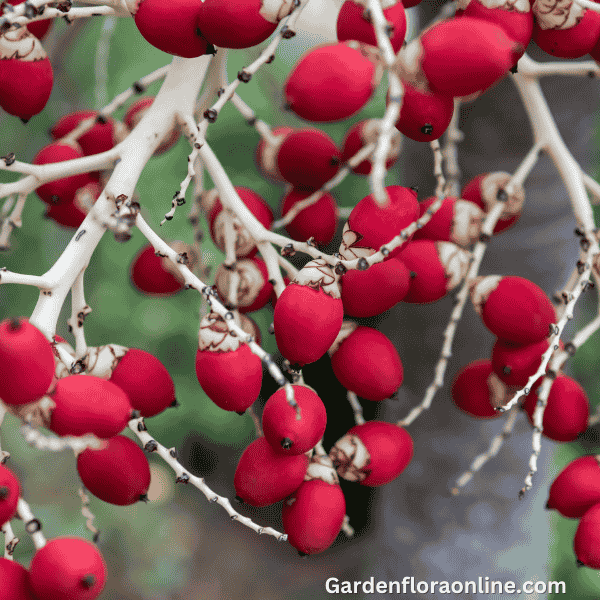Adonidia merrillii (Manila Palm)
A medium-sized palm. Trunk 4.5-6 m high, smooth, tapering to crown shaft, faintly ringed. Leaves pinnate, up to 1.8 m long, rigidly arched; leaflets ca. 50 pairs, sword shaped, 45-76 cm long. Flower stalk much branched, almost white. Flowers yellow-green and white. Fruit egg-shaped, ca. 3 cm long, smooth, bright-red when ripe.
Cultivation: Thrives in full sun to partial shade and prefers well-drained, moist soils. It can tolerate short periods of drought and has moderate tolerance to salt. However, it is susceptible to Lethal Yellowing disease and scale. For propagation, seeds germinate in 1 to 3 months.
Etymology: The genus name Adonidia is derived from Adonis, the Greek god of beauty and desire, symbolizing its beauty and attractive appearance. The specific epithet merillii honors American botanist Elmer Drew Merrill (1876–1956), known for his contributions to botany in the Asia-Pacific region.








